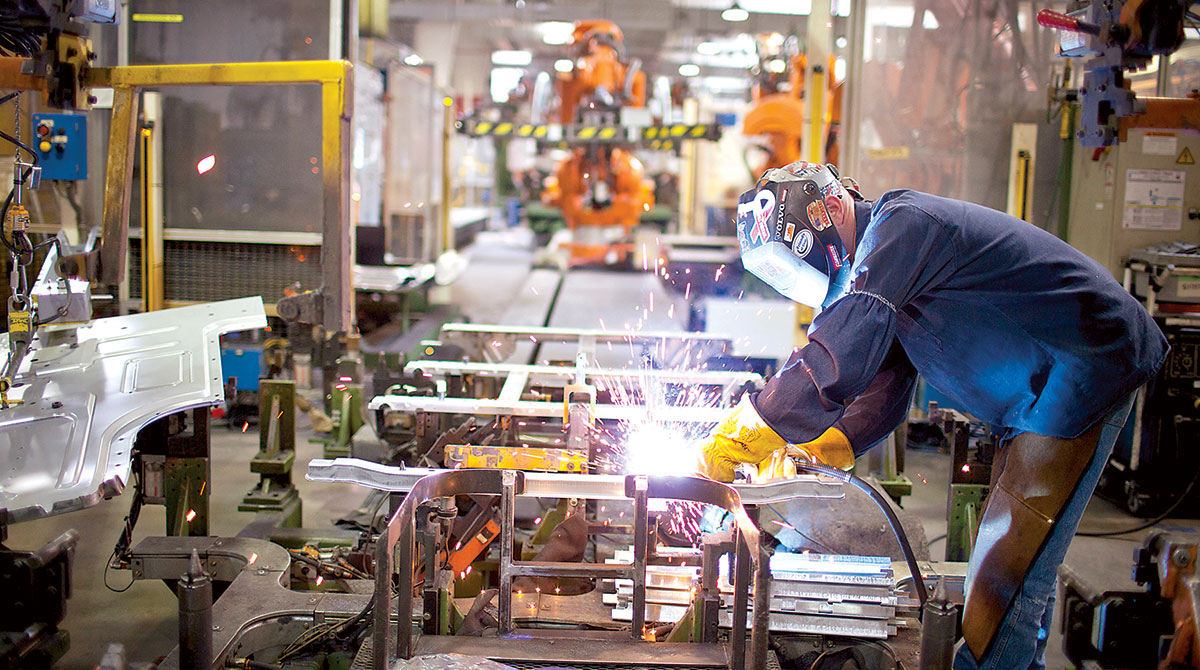Senior Reporter
February Class 8 Orders Rise 28%, Hit Highest Volume in 14 Months

This story appears in the March 13 print edition of Transport Topics.
North American Class 8 orders in February hit a 14-month high as volumes cleared 23,000 and exceeded expectations, analysts said.
Orders were 23,200, up 28% from 18,078 a year earlier, ACT Research Co. reported, citing preliminary data it would revise mid-month. At the previous high point, in December 2015, orders hit 28,150.
“One of the things we are really scratching our heads about is that the order strength somewhat belies market conditions right now,” ACT Vice President Steve Tam told Transport Topics. “We were looking for something 17, 18, 19,000.”
Tam said the psychological mindset of the business community is improving after carriers sat on their hands in the run-up to the presidential election. “So it could just be a catch-up from that type of behavior. But it seems like it’s lasting longer and is stronger than it normally is.”
Class 8 orders were 22,188 and 21,386 in January and December, respectively.
Given the latest rise, ACT is fine-tuning its 2017 forecast for North American Class 8 production to around 212,000 to 215,000, up from 207,200.
Research company FTR pegged preliminary Class 8 truck orders at 22,900.
“This is what a turning point feels like,” said Don Ake, FTR’s vice president of commercial vehicles. “This is the beginning and it’s not, at this point, a big turnaround, but it is a pretty good turnaround.”
FTR’s forecast for North American Class 8 production for at the year remains 213,000, for now, he said.
“My gut feel is we will probably move it up … but we won’t know that until we get into the details,” Ake said. “But I certainly don’t think we will be moving it down unless February’s production was worse than expected,” meaning it simply might have taken truck makers some time to ramp up production, he added.
Another analyst noted broad-based ordering activity.
Expectations were for orders of about 18,000, and so the February total “is particularly strong. … We think the strong orders were fairly broad-based and did not result from one particular customer or deal,” Credit Suisse analyst Jamie Cook wrote in a note to investors.
That said, however, Cook wrote that the vocational side showed the most strength.
But Tam cautioned that any exuberance on the part of vocational fleets over talk of a massive infrastructure rebuilding plan as a motive for ordering trucks now is not warranted.
“It is going to take time to get those plans put in place, and once they are, for them to be realized. You are easily a couple of years away from needing to buy trucks for that type of activity.”
At the same time, construction activity remains strong.
Analyst Ann Duignan with J.P. Morgan wrote in an investor note: “Total construction spending is now only 2% below last cycle’s peak, and private nonresidential construction activity is booming — now 5% above last cycle’s peak and almost as large as residential construction.”
Ake pointed to growth in the oil sector and noted, “On the freight side, one of the things we are watching is … even though freight is projected to grow, it is not growing significantly, yet.”
But he believes the increase in orders for trucks and trailers — trailer orders in January topped 32,000 and were up 92% compared with 2016 — is “probably” a good signal the economy could grow even a little faster.
Meanwhile, the latest Freight Transportation Statistics Index remained in the same narrow range that has continued for 2½ years, the U.S. Department of Transportation’s Bureau of Transportation Statistics reported March 8.
The Freight TSI measures the month-to-month changes in for-hire freight shipments by mode of transportation in tons and ton-miles, which are combined into one index, BTS said.
In January, trucking, pipeline and rail intermodal declined, while there were increases in airfreight, water and railcar loads, resulting in no change, it said.
However, Class 8 orders in February led Michael Baudendistel, an analyst with Stifel, Nicolaus & Co., to raise his production forecast, too, for both 2017 and 2018 by 15,000 units in each year, to 215,000 and 245,000, respectively.
“Orders for heavy-duty trucks have now exceeded our expectations for three consecutive months and continued to grow in February despite seasonal expectations for a modest decline,” he wrote in a note to investors.
Looking ahead, analysts said they expected year-over-year changes to be positive compared with relatively weak orders from 2016 and amid an improving economy.
Orders in April 2016 were 13,676, according to ACT.

